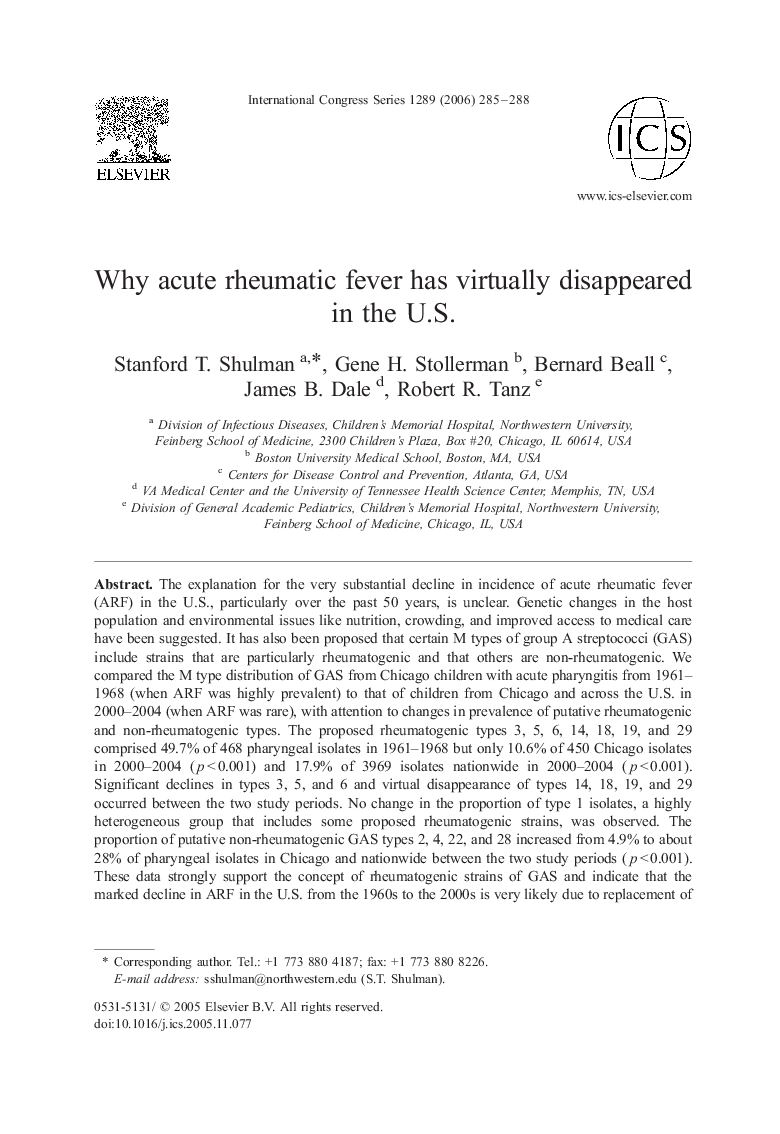| Article ID | Journal | Published Year | Pages | File Type |
|---|---|---|---|---|
| 2577458 | International Congress Series | 2006 | 4 Pages |
The explanation for the very substantial decline in incidence of acute rheumatic fever (ARF) in the U.S., particularly over the past 50 years, is unclear. Genetic changes in the host population and environmental issues like nutrition, crowding, and improved access to medical care have been suggested. It has also been proposed that certain M types of group A streptococci (GAS) include strains that are particularly rheumatogenic and that others are non-rheumatogenic. We compared the M type distribution of GAS from Chicago children with acute pharyngitis from 1961–1968 (when ARF was highly prevalent) to that of children from Chicago and across the U.S. in 2000–2004 (when ARF was rare), with attention to changes in prevalence of putative rheumatogenic and non-rheumatogenic types. The proposed rheumatogenic types 3, 5, 6, 14, 18, 19, and 29 comprised 49.7% of 468 pharyngeal isolates in 1961–1968 but only 10.6% of 450 Chicago isolates in 2000–2004 (p < 0.001) and 17.9% of 3969 isolates nationwide in 2000–2004 (p < 0.001). Significant declines in types 3, 5, and 6 and virtual disappearance of types 14, 18, 19, and 29 occurred between the two study periods. No change in the proportion of type 1 isolates, a highly heterogeneous group that includes some proposed rheumatogenic strains, was observed. The proportion of putative non-rheumatogenic GAS types 2, 4, 22, and 28 increased from 4.9% to about 28% of pharyngeal isolates in Chicago and nationwide between the two study periods (p < 0.001). These data strongly support the concept of rheumatogenic strains of GAS and indicate that the marked decline in ARF in the U.S. from the 1960s to the 2000s is very likely due to replacement of rheumatogenic types by non-rheumatogenic types as the etiologic agents of acute streptococcal pharyngitis in children.
